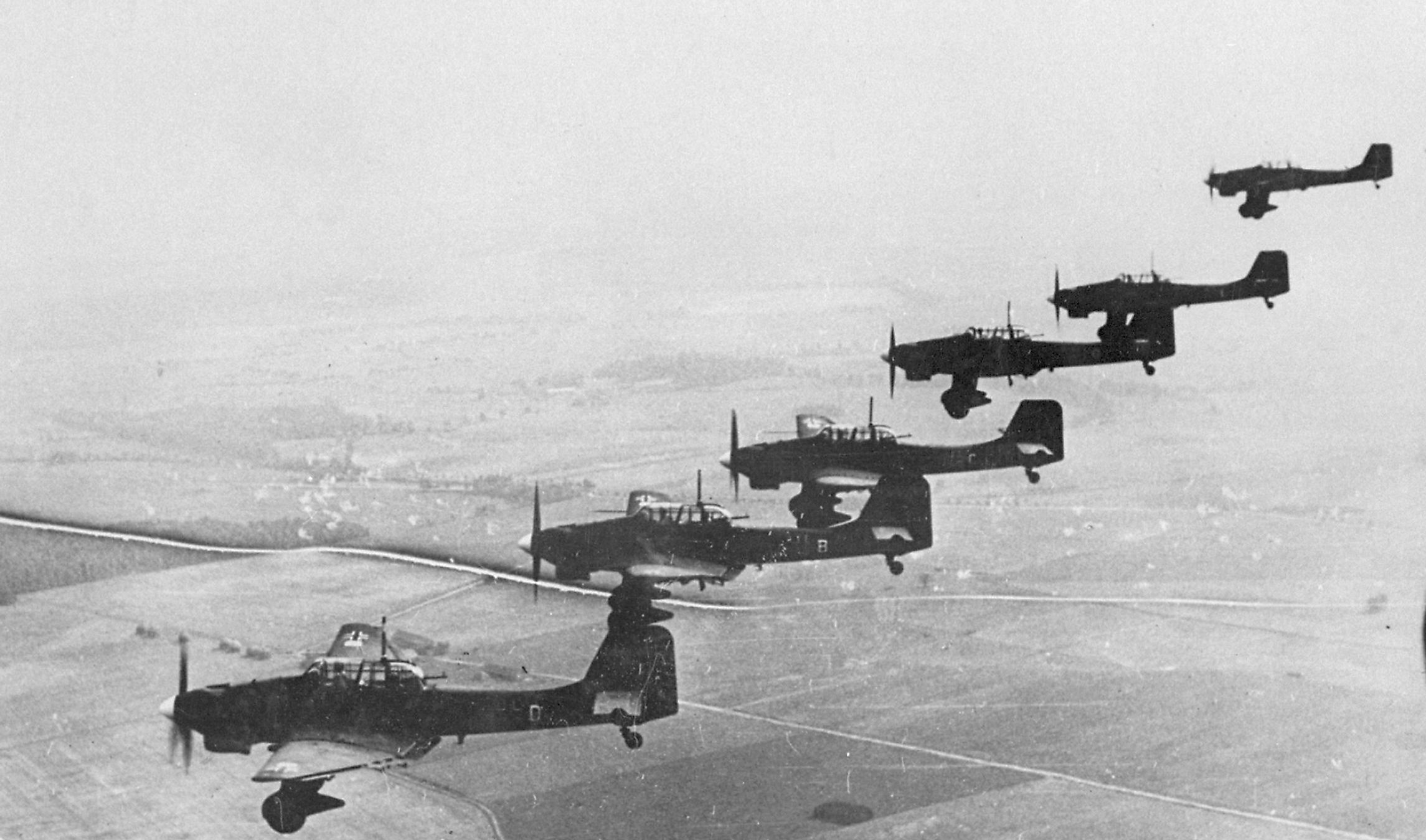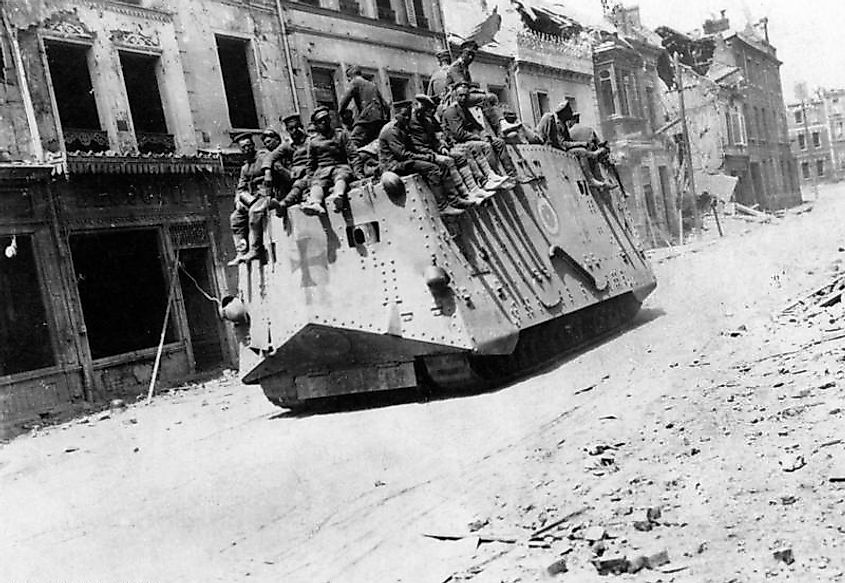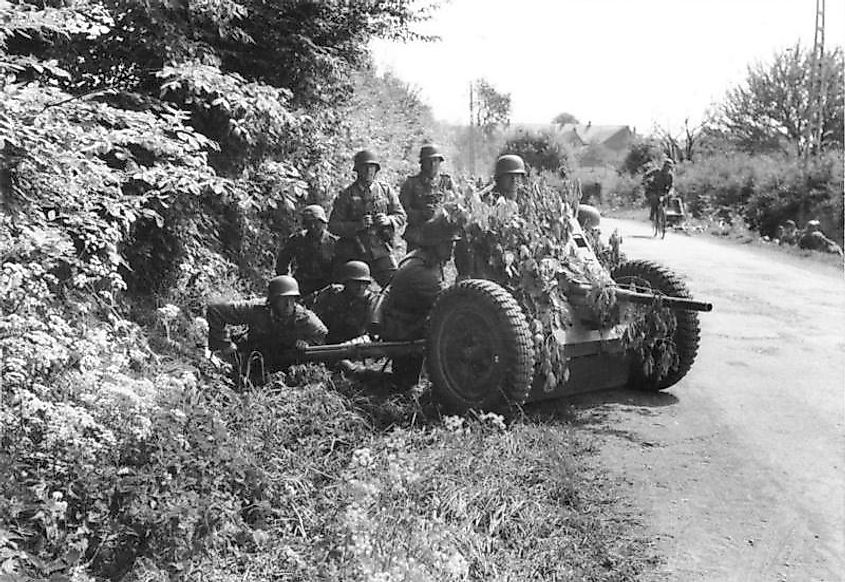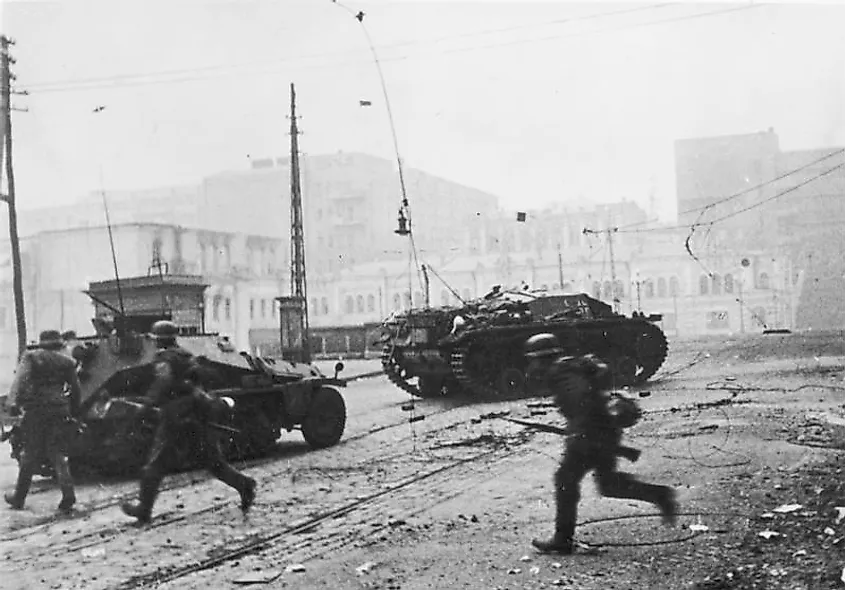
Blitzkrieg Military Tactic
Following World War I, which was characterized by trench warfare, many thought that another major conflict would see a similar method of fighting. However, the reality was very different. Indeed, the Wehrmacht’s Blitzkrieg saw a much faster form of warfare. But, while these methods were initially successful, their limitations would become clearer as the war progressed. Blitzkrieg directly translates to "lightning war." It functioned as follows: in a surprise attack, the Germans would concentrate huge amounts of combined arms (tanks, planes, and artillery) in one area. Thereafter, the tanks would move through and roll over everything. Finally, the infantry would come in and clear up any remaining enemy forces. These tactics were not just meant to defeat the enemy, they were intended to completely obliterate them in a Vernichtungsschlacht (a battle of annihilation). This made Blitzkrieg particularly brutal for those on the receiving end.
History Of Its Usage

The idea of Blitzkrieg can be traced back to the writings of German generals and field marshals like Carl von Clausewitz, Helmuth von Moltke, and Alfred von Schlieffen. However, Blitzkrieg, or at least proto-Blitzkrieg tactics, were only first used en masse during the 1918 Spring Offensive in World War I--a massive surprise counterattack and a last-ditch effort to win the war before the Americans entered. The speed and surprise of the attack initially worked, with the Germans pushing the Allies from Amiens and then 75 miles from Paris. But, a combination of weakening supply lines and Allied reinforcements eventually halted the offensive. These tactics were again used during the Spanish Civil War (1936 to 1939), this time to great effect with the Germans helping Francisco Franco and the Fascists win against the Republicans.
Blitzkrieg In World War Two
On September 1, 1939, Germany invaded Poland. Blitzkrieg proved enormously successful during this campaign for two main reasons. First, the Polish army was spread very thin, making it vulnerable to any heavy attack on one particular area. Second, the Soviet Union (USSR) invaded eastern Poland on September 17, thereby splitting the Polish army's attention. Thus, by early October, most large-scale fighting was finished.

The invasions of the Netherlands, Belgium, Luxembourg, and France all began on May 10, 1940, involving a combined arms approach in conjunction with a surprise attack. Much like in Poland, these Blitzkrieg tactics were effective: Luxembourg fell in a day, the Netherlands was defeated in a week, and Belgium took about two and a half weeks to fall.
The Battle of France was a lengthier affair, with the initial problem for the Germans being the Maginot Line, a series of fortifications, weapon installations, and obstacles put in place in the 1930s. Hence, the Wehrmacht went through the far-less heavily French-Belgian border, giving them the element of surprise since the French believed that the Ardennes Forest would function as a natural barrier. Once the invasion was underway, the Wehrmacht raced to the English Channel to cut off the Allied soldiers. Despite a seemingly miraculous evacuation at Dunkirk in which hundreds of thousands of troops were rescued, the invasion was nonetheless a strategic catastrophe for the Allies. Indeed, France had fallen in six weeks, an outcome that can largely be attributed to the speed and efficacy of Germany's Blitzkrieg.
The Limitations Of Blitzkrieg

Importantly, however, Blitzkrieg had some notable limitations. Perhaps the most significant of these flaws was its inefficacy in a protracted battle. As was seen in the First World War, once the fighting went on for months, ever-stretched supply lines and increasingly tired troops made achieving a decisive victory more difficult. This would prove problematic when Germany invaded the Soviet Union on June 22, 1941. The Wehrmacht initially made rapid progress, reaching the outskirts of Leningrad and Moscow by the autumn of 1941. But, as the German Army was repelled from Moscow and got bogged down in places like Stalingrad, it became clear that the invasion would not be over quickly; the sheer size of the USSR necessitated a long-term military engagement. This proved fatal for Germany, with its army being consistently pushed back until its eventual defeat in 1945.
In conclusion, Blitzkrieg was enormously effective in the early stages of World War Il. Poland quickly fell due to the Wehrmacht’s highly aggressive tactics. This was followed by the defeat of the Low Countries and France. However, Blitzkrieg's flaws were exposed in the protracted invasion of the Soviet Union, becoming a major factor in Germany's ultimate defeat.











